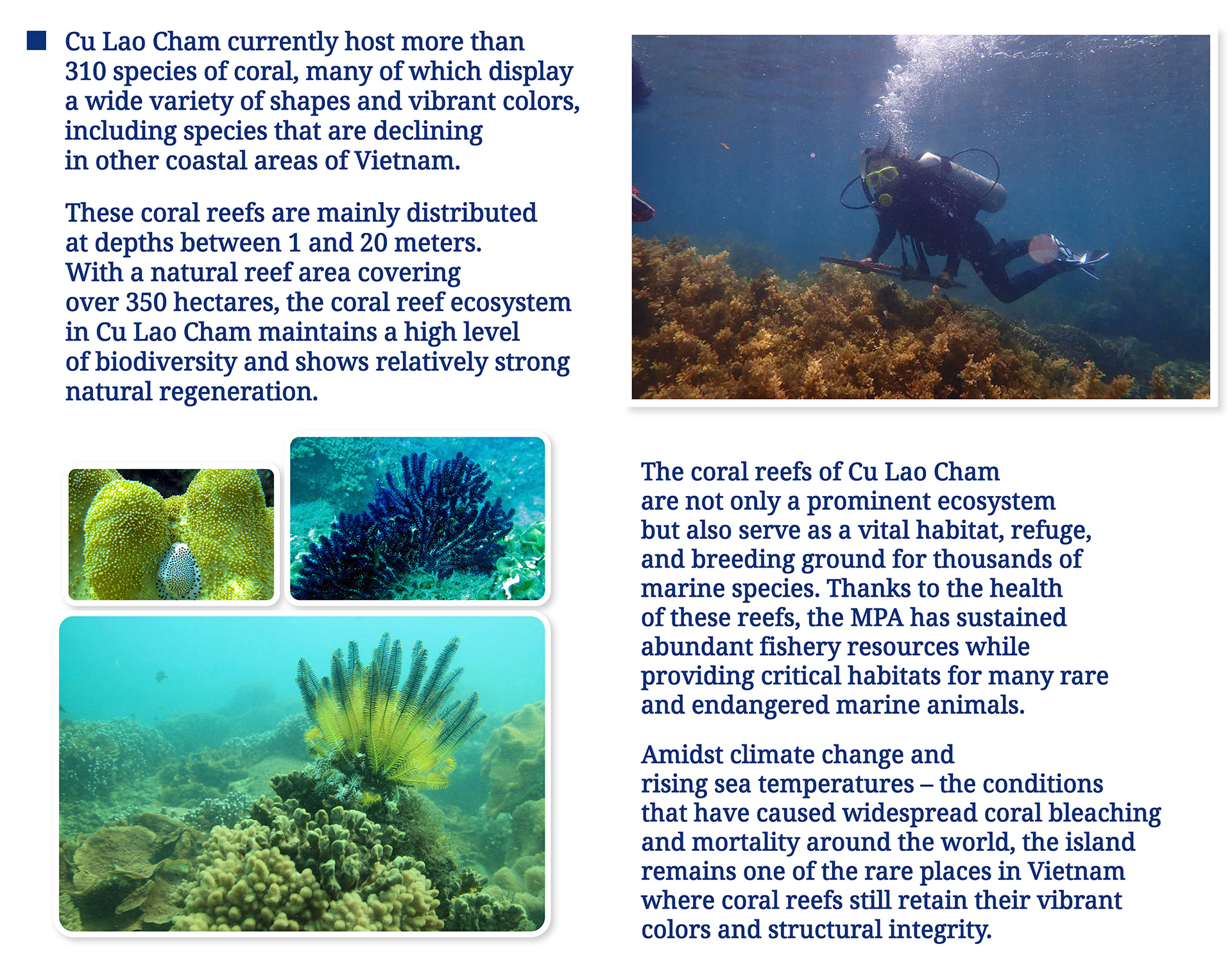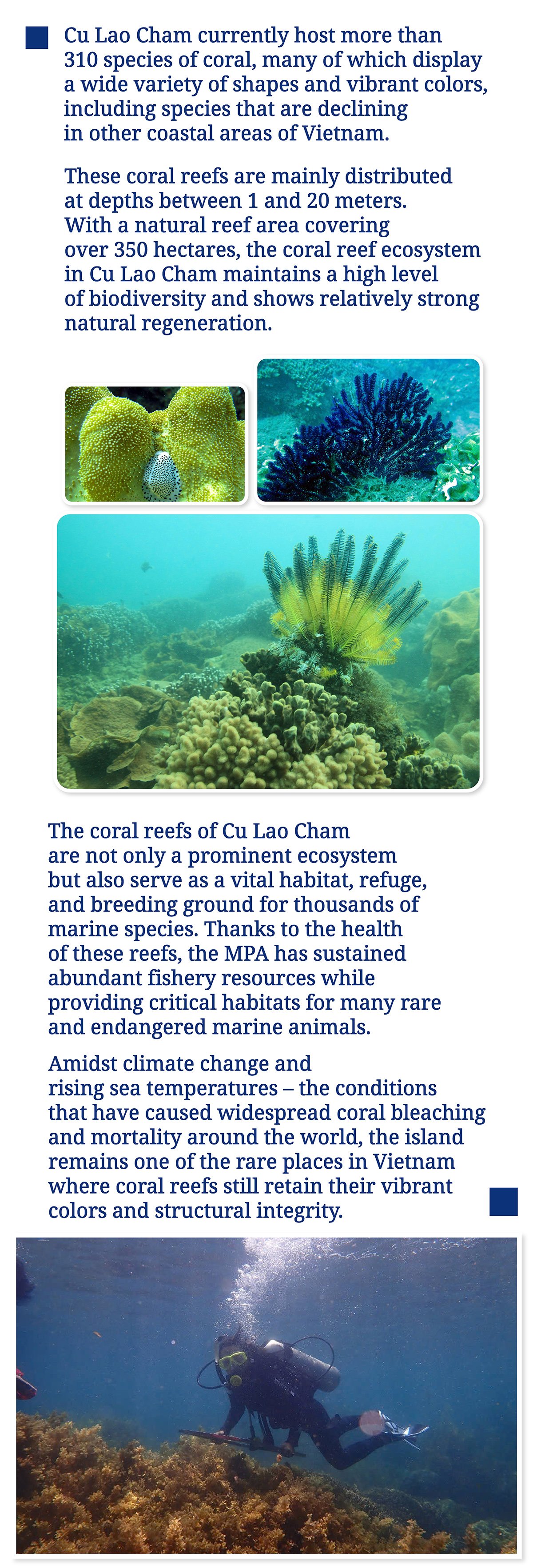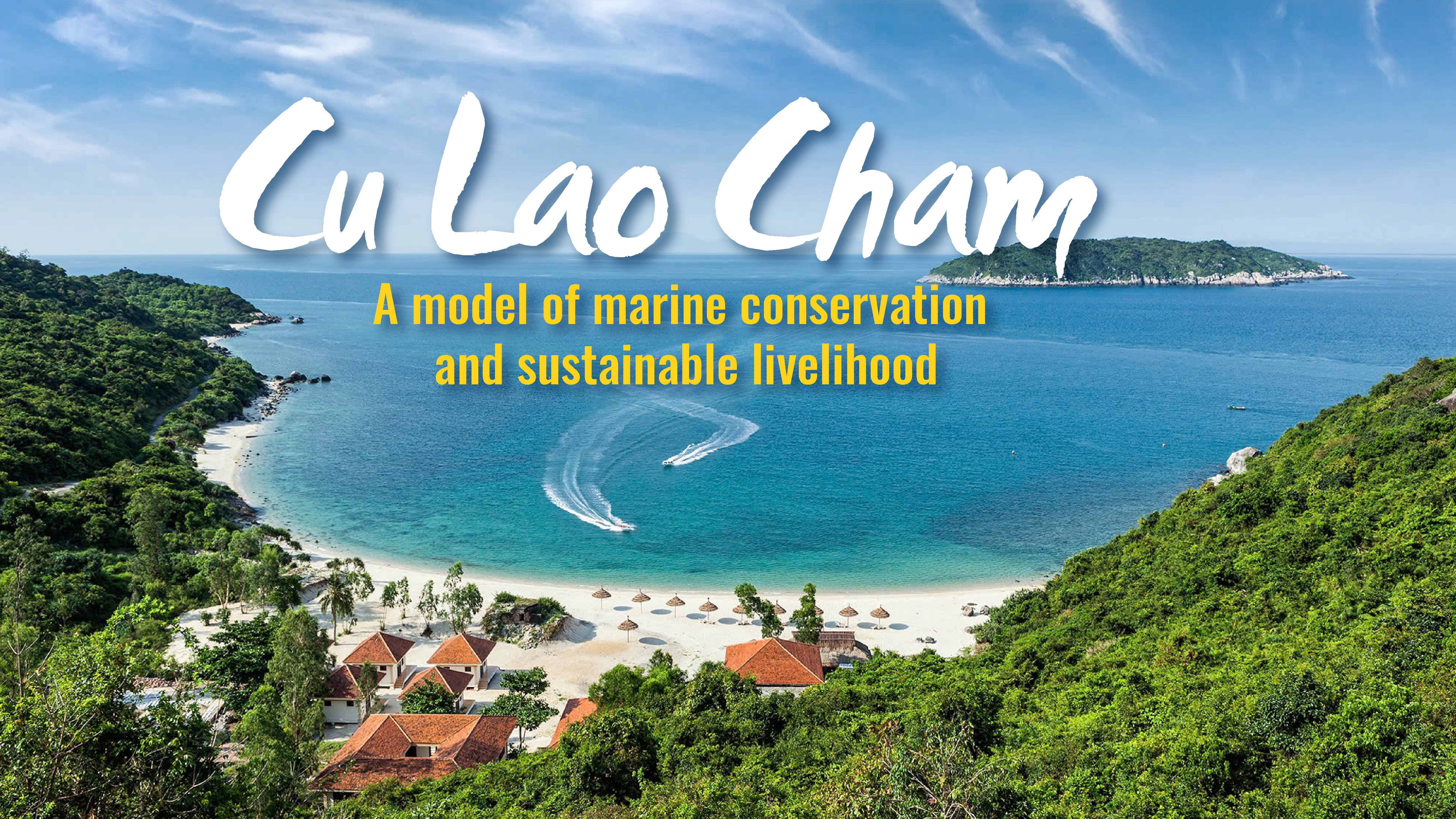The Cu Lao Cham MPA not only conserves biodiversity but also supports sustainable livelihoods and raises community awareness about protecting marine resources and environment.
Located about 15 kilometers east of Hoi An's coastline, Cu Lao Cham has long been regarded as a “hidden gem” in the open sea, not only for its unspoiled beauty but also for its extraordinary ecological value. Recognizing the critical importance of this marine area, the Quang Nam Provincial People's Committee issued a management regulation for the Cu Lao Cham MPA in 2005. Spanning 23,500 hectares, it encompasses seven islands and the surrounding waters.
In 2006, the province officially established the Cu Lao Cham MPA Management Board, tasked with protecting and conserving the region’s marine resources. Beyond resource conservation, the initiative also aims to curb illegal exploitation, environmental pollution, and the degradation of marine ecosystems.
Importantly, Cu Lao Cham MPA also promotes environmental awareness among local communities, encouraging sustainable livelihoods such as eco-tourism and environmentally friendly traditional fishing practices. Today, Cu Lao Cham MPA stands out as a model for conservation and sustainable development within Vietnam’s national network of marine protected areas.
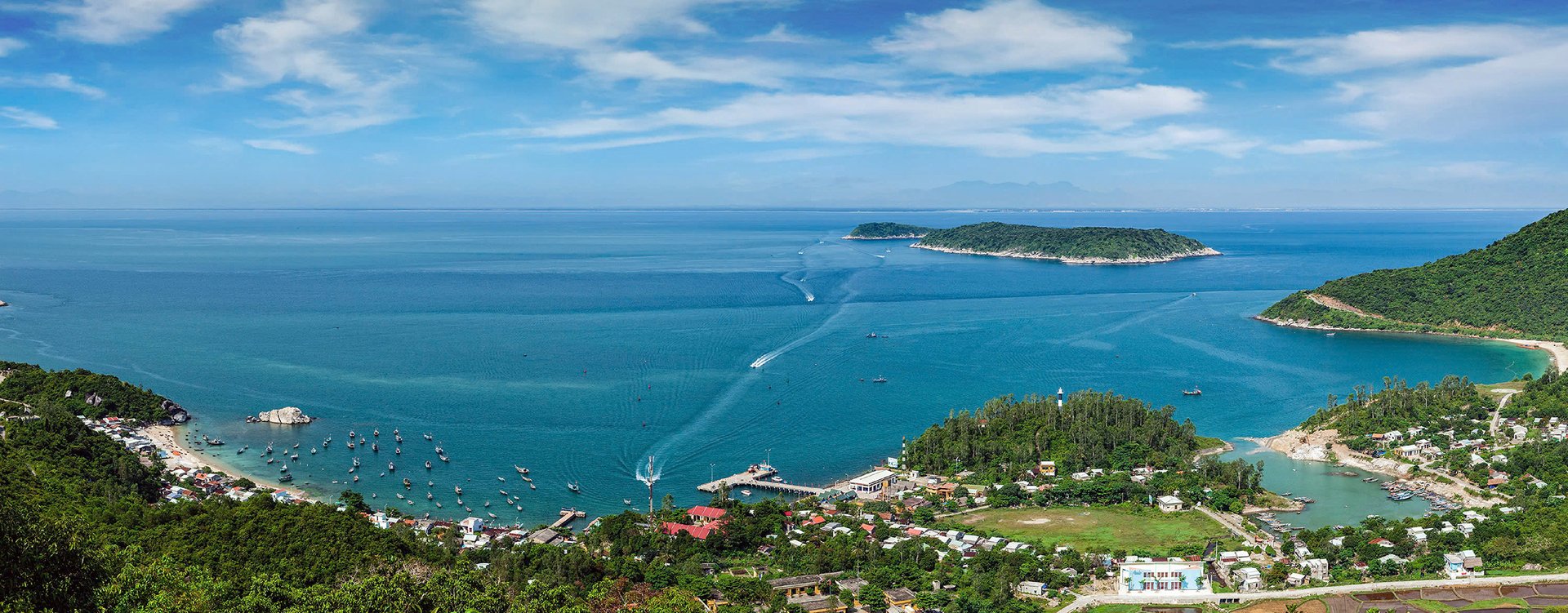
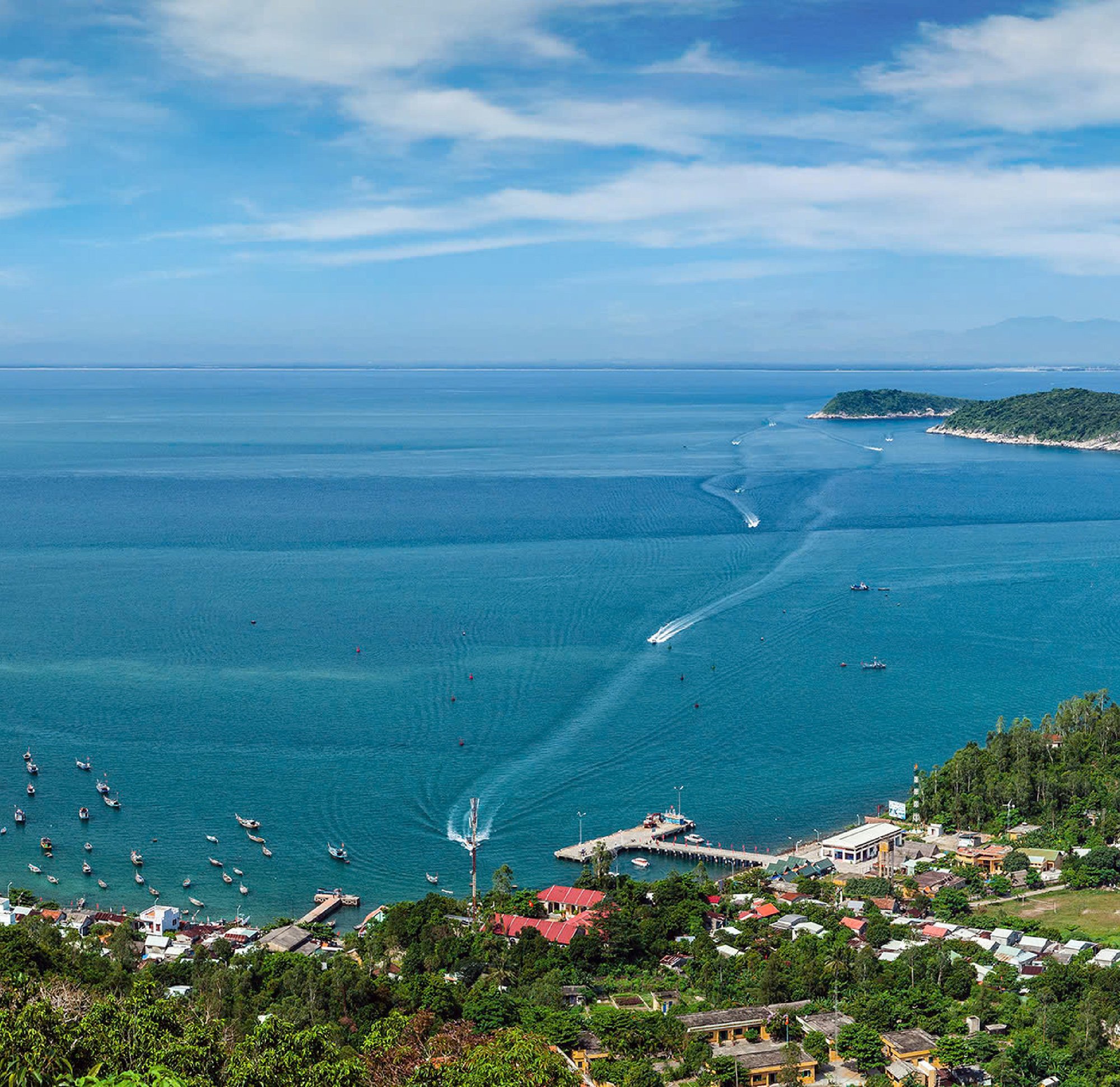
In 2009, Cu Lao Cham was recognized by UNESCO as a World Biosphere Reserve - a significant milestone in the island’s ongoing journey toward sustainability. Biodiversity assessments have identified a rich marine ecosystem here, featuring coral reefs, seagrass beds, and mangrove forests, which serve as vital breeding and shelter grounds for hundreds of marine species.
According to the Cu Lao Cham MPA Management Board, the area is home to over 300 species of coral, 270 species of fish, and many rare marine animals such as the noble volute, giant clams, groupers, and snappers. Especially notable is the presence of seagrass meadows. This is a crucial food source and habitat for endangered marine mammals like the dugong, a species facing global extinction.
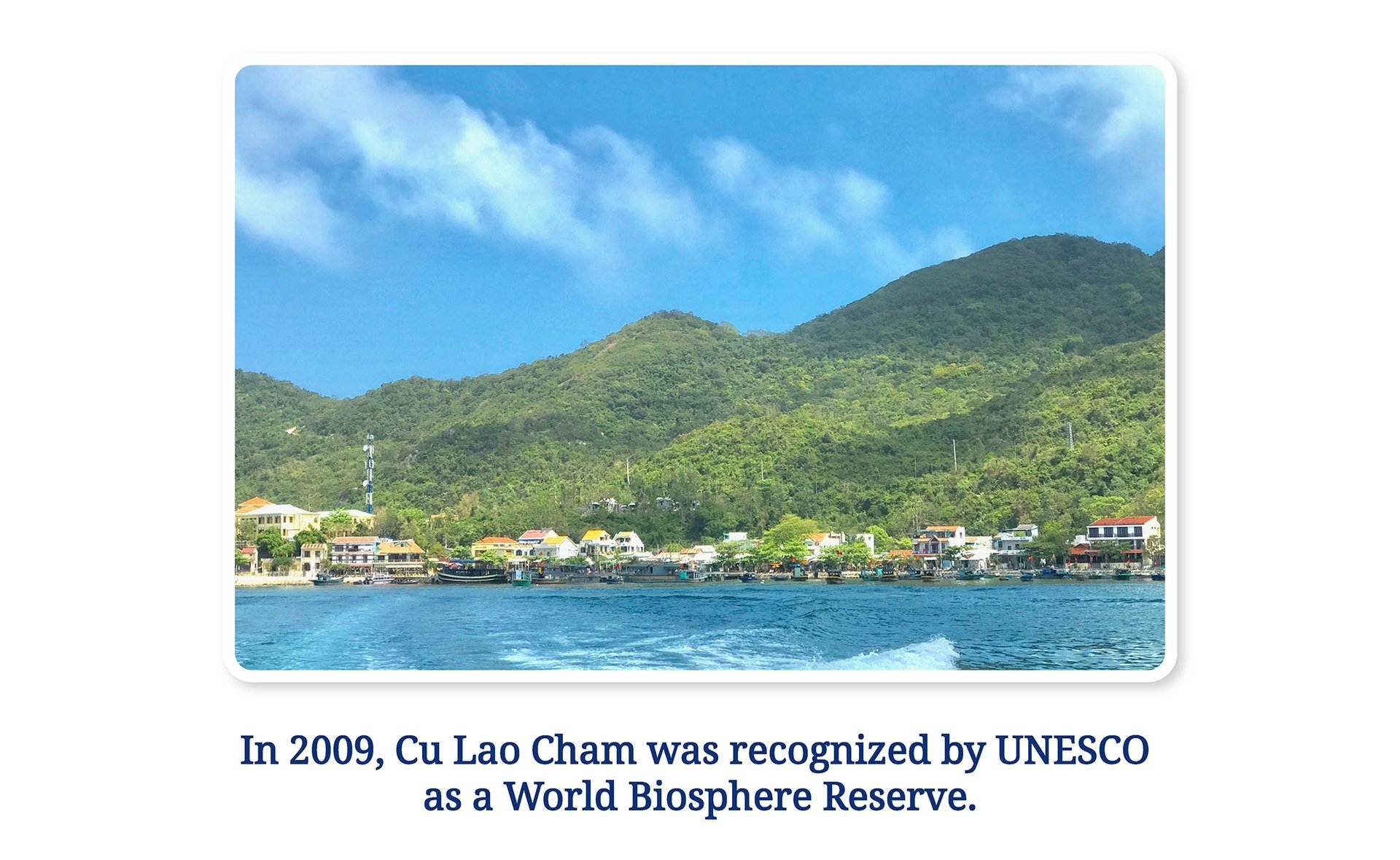
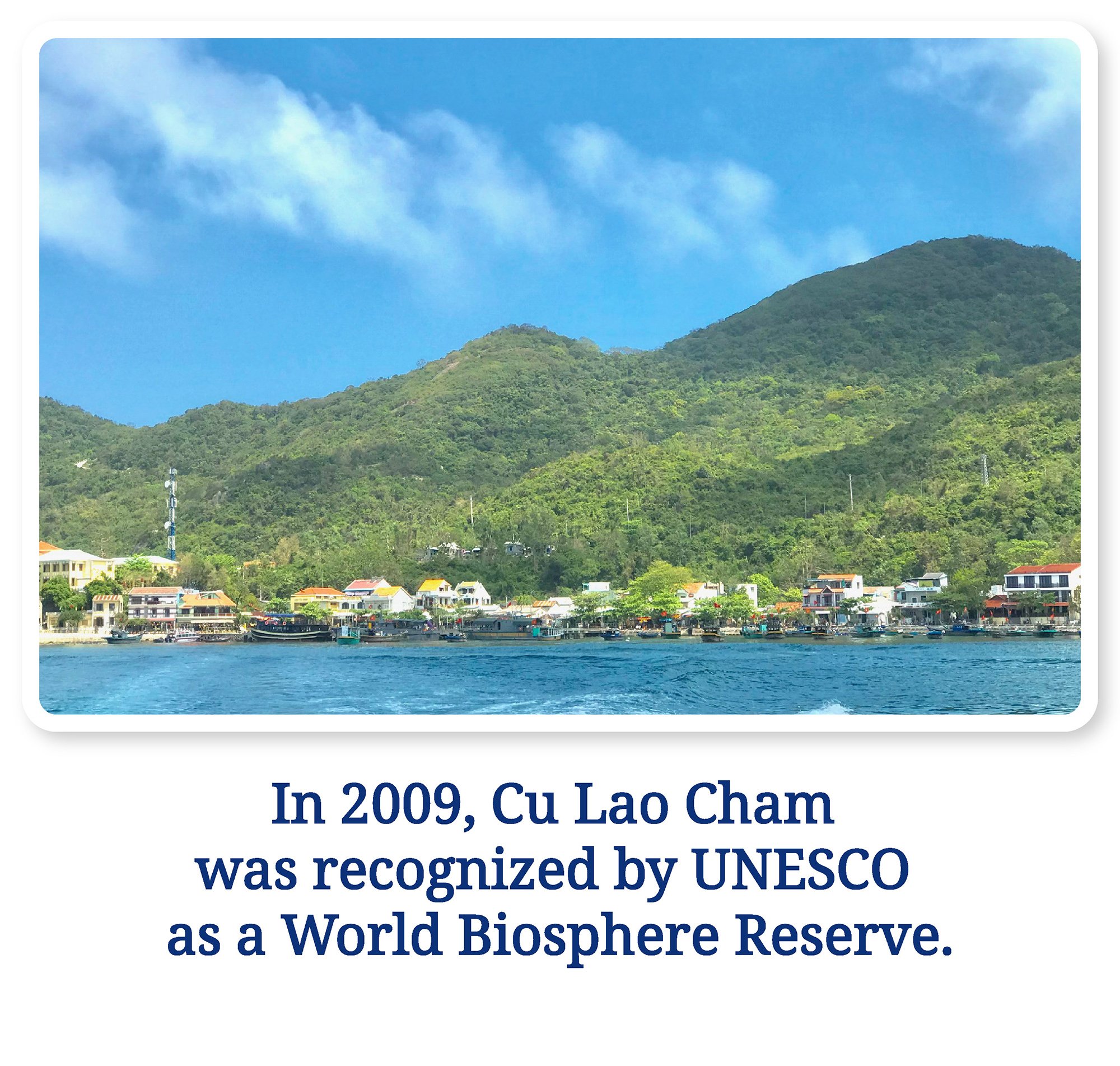
The coral reefs of Cu Lao Cham are not only biologically rich but also serve as natural barriers, protecting the coastline from erosion and buffering against powerful waves during stormy seasons. Preserving these coral reefs, therefore, is not just about protecting the environment but also safeguarding the future livelihoods of local communities.
Unlike many isolated islands, Cu Lao Cham boasts an interconnected ecosystem that bridges both marine and primary forest habitats - an ideal setting for birds, reptiles, small mammals, and insects. The island’s forest is rich in native flora, including rare hardwoods such as ironwood, chinkapin, and lagerstroemia, which create a multi-layered ecological canopy and help regulate the island’s microclimate.


Nearly two decades since its establishment, Cu Lao Cham MPA has achieved remarkable results, demonstrating the success of a conservation model that harmonizes nature protection with sustainable livelihoods. The tireless efforts of local authorities, fishing communities, and conservation organizations have brought about positive changes in preserving natural resources and the marine environment in this region.
One of the most significant accomplishments has been the restoration and protection of key marine ecosystems, including coral reefs, seagrass beds, and mangrove forests. Coral coverage in the Cu Lao Cham area now averages between 40% and 60%, with some locations reaching up to 70% - a considerable increase compared to levels prior to the establishment of the MPA. These coral ecosystems not only provide critical habitats for hundreds of marine species but also play an essential role in reducing coastal erosion, buffering waves, and maintaining marine ecological balance.
According to Mr. Nguyen Van Vu, Deputy Director of the Cu Lao Cham MPA Management Board, coral protection goes hand-in-hand with the conservation of sea turtles - an endangered species facing extinction. Thanks to monitoring programs, rescue efforts, and the release of hatchlings back into the sea, the number of sea turtles returning to nest in the area is beginning to rise. Additionally, populations of commercially valuable fish, crustaceans, and benthic organisms are also gradually recovering, providing a stable source of income for local fishermen.
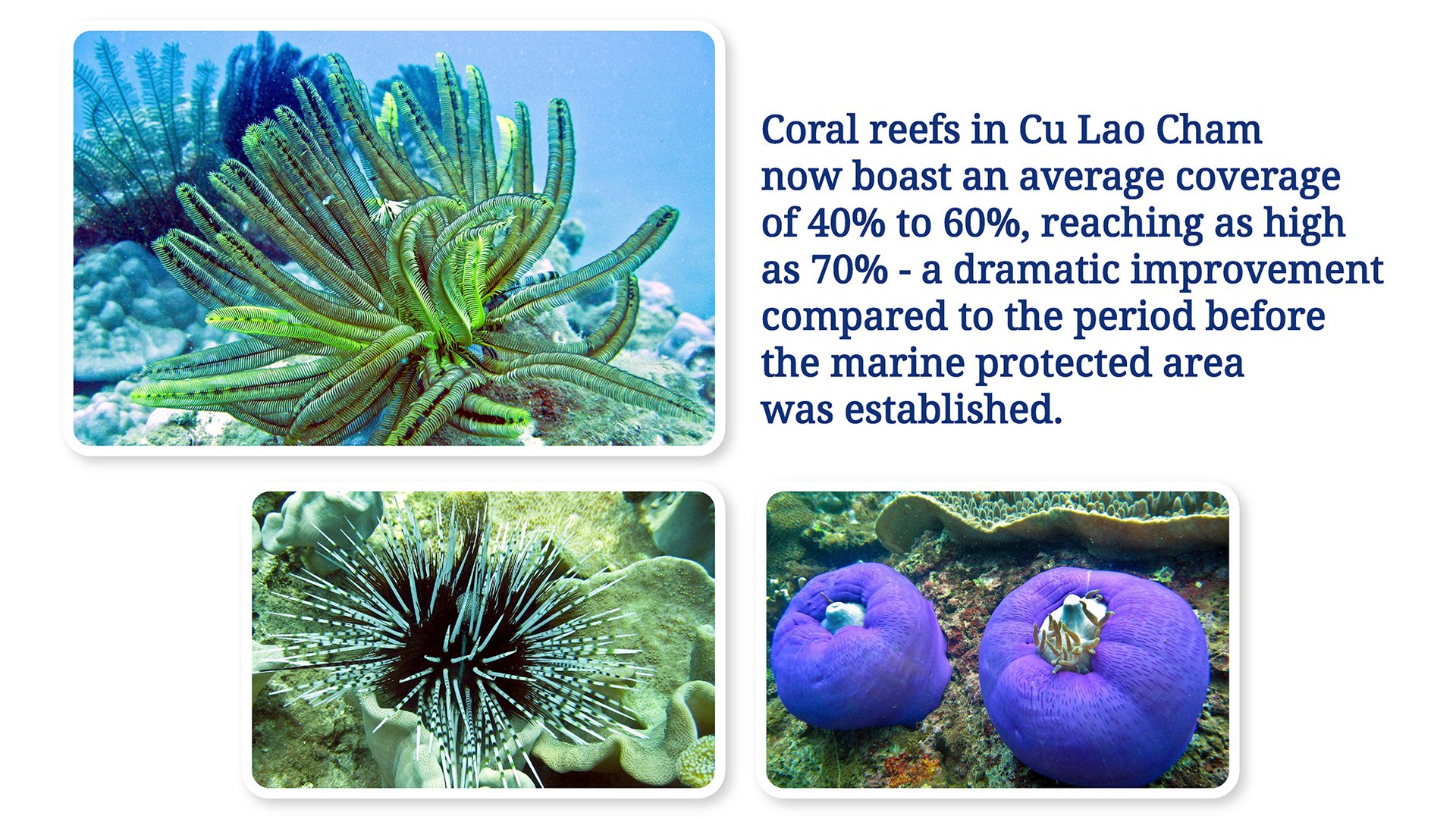
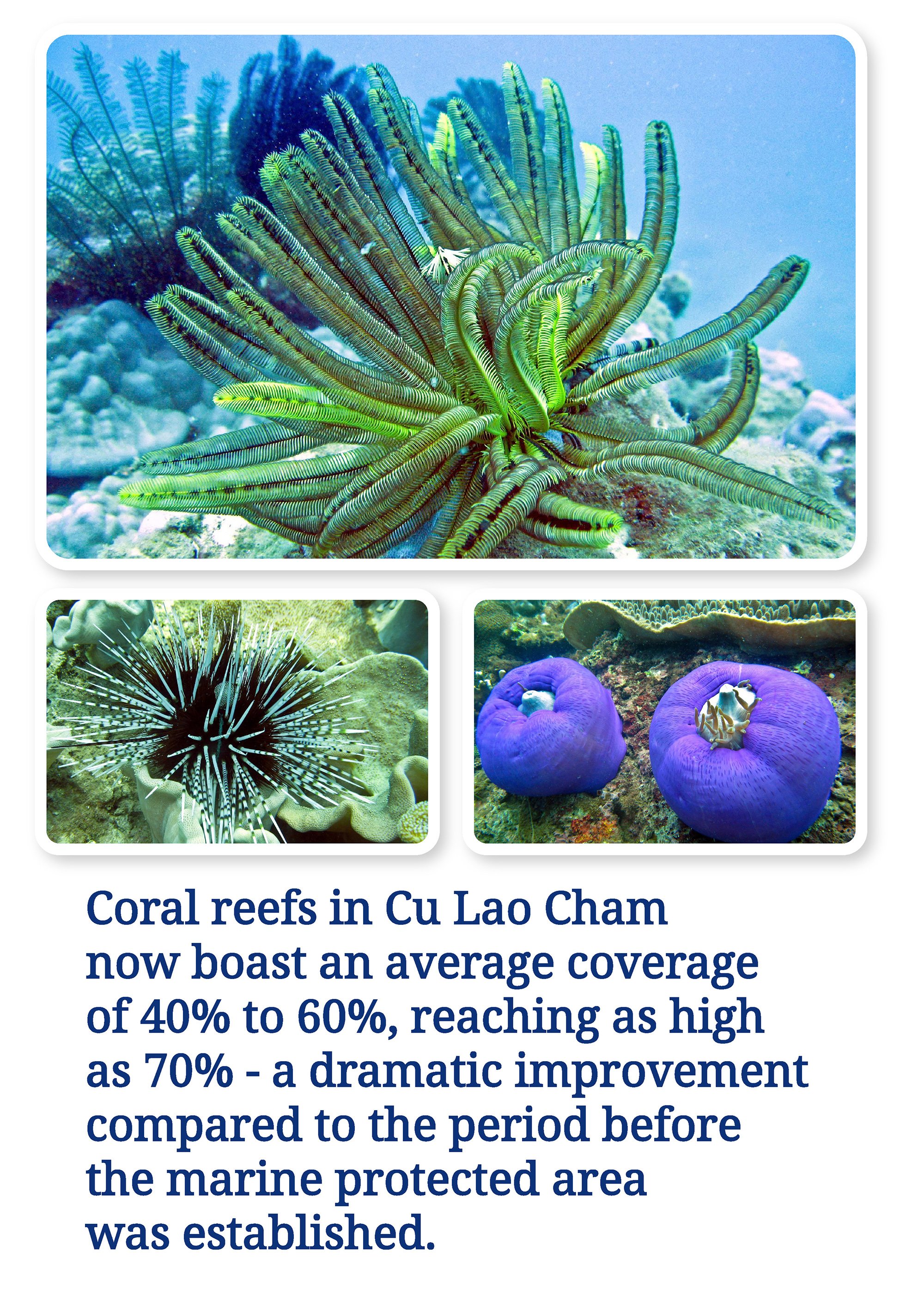
A standout achievement in Cu Lao Cham's conservation journey has been the development of the model “community-based co-management of marine resources”. This initiative has empowered local residents, particularly fishermen, to become key stewards of the marine environment, enhancing their sense of ownership and aligning conservation goals with sustainable livelihoods. Today, nearly 3,000 islanders participate in self-governing groups that monitor no-take zones, report violations, and uphold community regulations to protect marine ecosystems.
“One of our most significant milestones,” said Mr. Nguyen Van Vu, Deputy Director of the Cu Lao Cham MPA Management Board, “was the launch of the 'Say No to Plastic Bags' campaign in 2009. Cu Lao Cham became the first locality in Vietnam to ban plastic bags and single-use plastics.” This initiative has successfully transformed habits among both residents and visitors, significantly reducing plastic pollution in the marine environment. The result is not only cleaner coastlines and better water quality but also the emergence of Cu Lao Cham as a symbol of green, clean, and beautiful living.
Alongside biodiversity conservation, Cu Lao Cham is also fostering sustainable ecotourism. Activities such as coral reef diving, forest trekking, and cultural tours of traditional fishing villages are closely managed to minimize environmental impact. Revenue from tourism provides local communities with a reliable source of income - one that no longer depends on overexploiting fragile marine resources. In particular, a pilot program for payment for marine ecosystem services is helping to generate stable funding for conservation activities while also raising community awareness and responsibility.
With these accomplishments, Cu Lao Cham has become a national model for marine conservation in Vietnam, earning recognition from major international organizations such as UNEP, UNDP, and IUCN. Its success serves as compelling proof that environmental protection and socioeconomic development can go hand in hand and offers valuable lessons for other coastal areas striving to preserve their natural heritage.
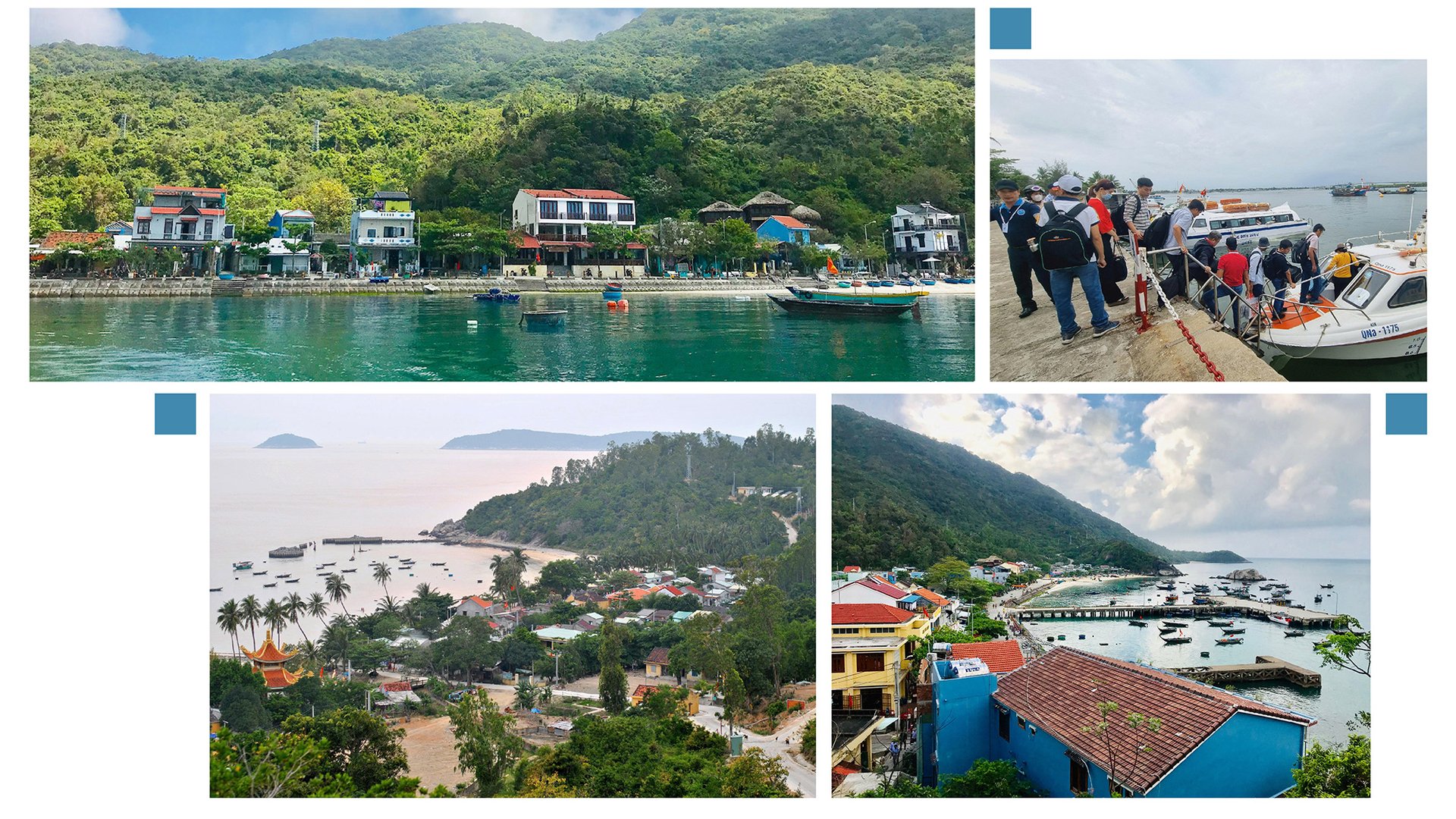
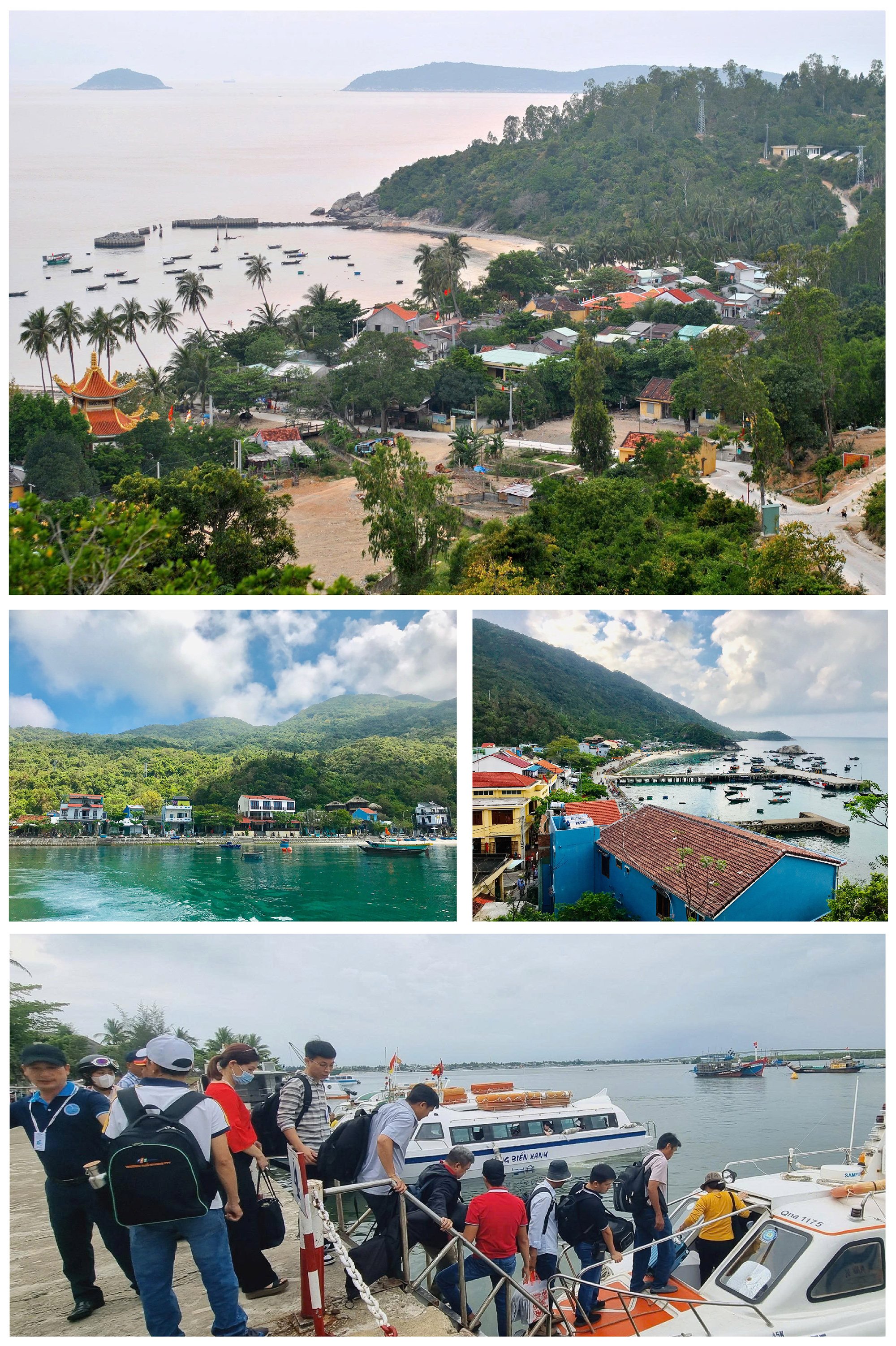


According to the Cu Lao Cham MPA Management Board, around 635 fishing vessels are currently operating in this fishing ground. These mainly employ methods such as trawling, gillnetting, purse seining, and push nets, and come from coastal districts of Quang Nam province and neighboring areas. Their activities have significantly impacted natural resources, the environment, and biodiversity conservation efforts.
Although patrols are regularly maintained (detecting and handling between 70 to 120 violations annually), the penalties imposed are not strong enough to deter illegal activities, resulting in not only a lack of reduction in violations but also signs of increasing offenses.
In addition, nearly a dozen sea turtles, an endangered and critically important species globally and in Vietnam, die annually in the MPA due to entanglement in fishing nets. Moreover, unauthorized tourist boat routes have severely damaged the marine ecosystem. The seagrass beds and coral reef ecosystems, often referred to as the "homes" of marine species, are particularly vulnerable. Seagrass beds are mostly found in areas like Bai Bac, Bai Ong, Bai Chong, and Bai Bim.

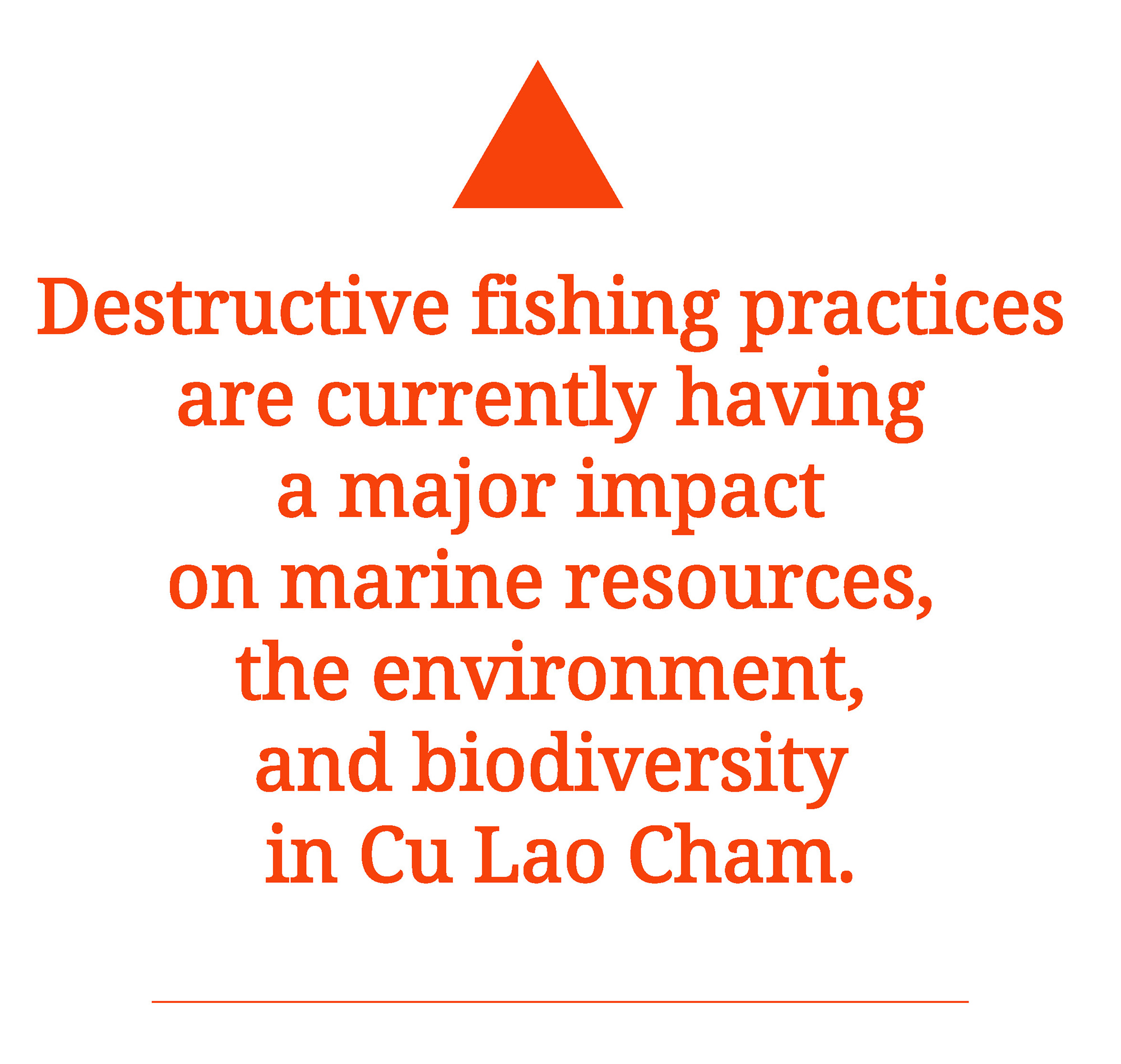
These ecosystems are essential for maintaining biodiversity and natural resources. However, recent assessments show that seagrass areas in Bai Chong and Bai Ong have severely declined. Notably, Bai Ong has lost over 90% of its seagrass coverage, mainly due to the disturbance of sediment layers by tourist canoes, which has smothered the seagrass in these areas.
Additionally, some construction projects have neglected environmental protection measures, allowing sediment and construction materials to wash into the sea, polluting the water. This has damaged the coral reef ecosystem, which is extremely sensitive to environmental changes. Construction around the island has also led to the loss of over 100 hectares of special-use forest - a trend that continues to worsen as landslides become more frequent and severe.


Amid climate change and growing pressure from fishing and tourism, the future development of the Cu Lao Cham MPA is being strategically planned in a comprehensive and sustainable direction. The overarching goal is to conserve biodiversity and restore coastal and marine ecosystems while improving local living standards and promoting a development model that balances human and environmental well-being.
A key focus is strengthening and expanding protected areas while increasing control over buffer zones and ecological linkages. This aims to mitigate negative impacts from tourism, aquaculture, and fishing on the MPA’s core zones. Establishing temporary no-take zones, restricted-use areas, and ecological recovery zones is under consideration to support the replenishment of marine resources, particularly ecologically and economically important species like sea turtles, coral reefs, and reef fish.
Mr. Nguyen Hung Linh, Director of the Cu Lao Cham MPA Management Board, stated that the reserve also aims to tighten monitoring and management of fishing activities, moving towards the complete elimination of destructive practices such as bottom trawling and electric shock fishing. With support from local authorities and conservation organizations, the fishing community will continue to receive training and be introduced to environmentally friendly harvesting models that ensure livelihoods while reducing pressure on marine resources.
“Sustainable ecotourism development is another key strategy,” Mr. Linh said. “Cu Lao Cham is shifting towards low-impact tourism that highlights natural experiences and local culture. Managing tourist numbers, re-planning tour routes, and investing in eco-friendly infrastructure, such as waste and wastewater treatment and ecological toilets, will be prioritized. Particularly, the ‘Say No to Plastic Bags’ campaign and the movement to reduce single-use plastics will continue to be expanded as symbols of the island’s green lifestyle.”
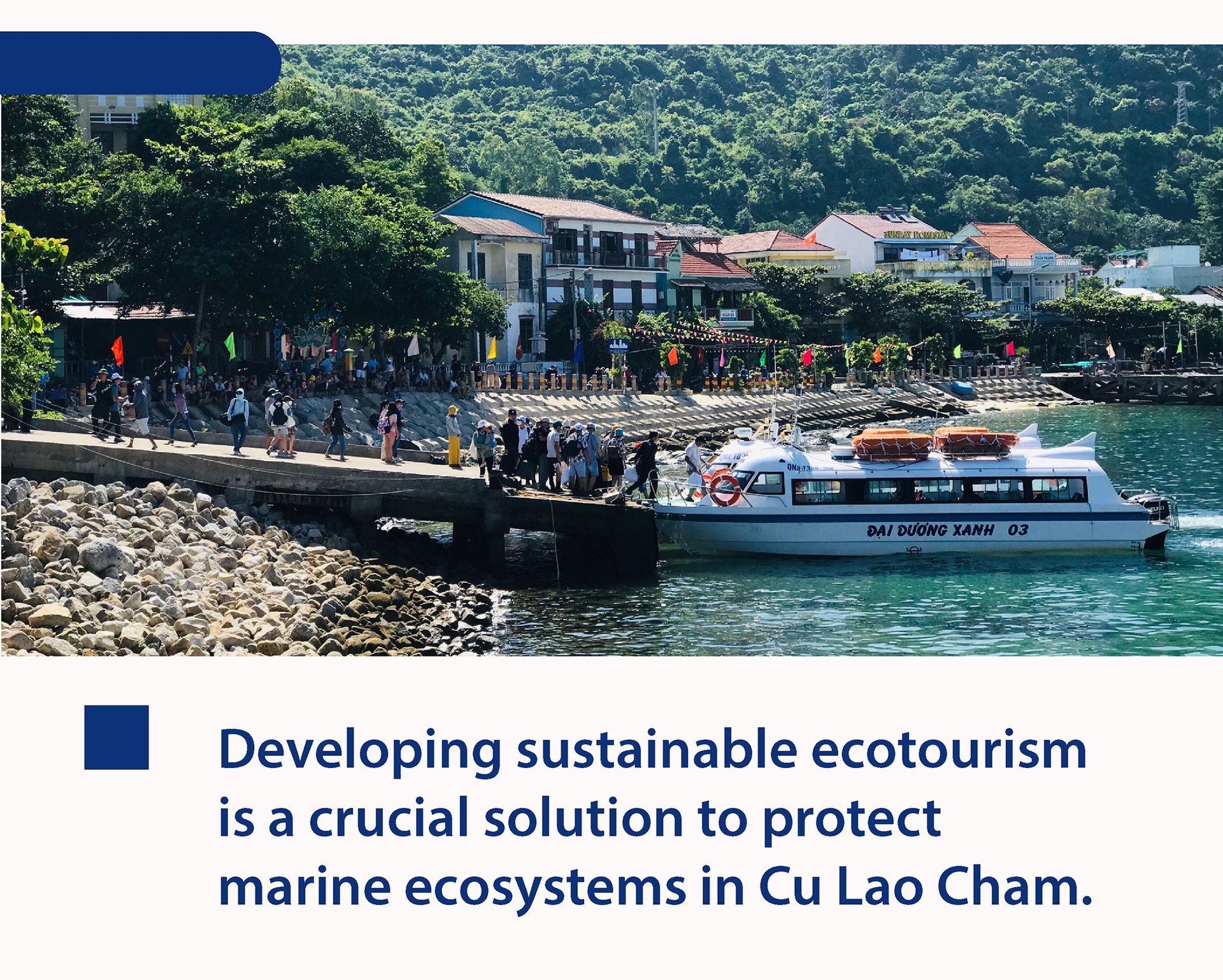
Mr. Linh also emphasized that in the long term, the MPA aims to establish a payment mechanism for marine ecosystem services. Under this model, individuals or organizations that benefit directly from the natural environment, such as tourism operators, seafood businesses, or licensed fishing activities, would contribute financially to the protection, maintenance, and restoration of marine ecosystems. By creating a financial link between resource users and ecosystem managers, PES can generate steady revenue to fund conservation activities while also reinforcing a sense of responsibility among users.
This model is currently being piloted and is expected to provide a stable and transparent funding source for conservation work while encouraging community involvement in resource monitoring and management. Mechanisms under review include environmental user fees for tour operators, voluntary conservation contributions, and community-based monitoring programs tied to small financial incentives. If successful, Cu Lao Cham’s PES could become a successful example for other MPAs across Vietnam and the region, providing a replicable model for financing nature-based solutions in coastal and marine areas.
Another important direction is investing in scientific research and conservation technology, including the use of modern equipment for biodiversity monitoring, water quality assessment, and digitizing benthic ecological maps. The application of artificial intelligence, technology, and digital tools will enhance management efficiency and enable timely responses to ecosystem threats. All these efforts are aimed at transforming Cu Lao Cham from a simple nature reserve into a vibrant ecosystem model where humans and nature coexist and thrive sustainably.
The road ahead will not be without challenges. Ensuring sustainable financing, maintaining community support, and adapting to evolving environmental pressures will require ongoing effort and innovation. But with its solid foundation, visionary leadership, and active community participation, Cu Lao Cham is well-positioned to demonstrate how marine protected areas can thrive in the face of climate change serving both as a refuge for nature and a beacon for sustainable development.
As climate change continues to drive rising sea levels, warmer ocean temperatures, and shifting ecological dynamics, Cu Lao Cham is positioning itself as a living laboratory for climate adaptation in coastal areas. The MPA is working with scientists and NGOs to monitor environmental indicators, track ecosystem health, and develop adaptive management strategies.
“The success of any protected area depends on the participation of local communities,” Mr. Linh emphasized. “We are not just managing nature. We are managing a relationship between people and their environment. Community engagement is also critical. The MPA management board has established partnerships with local organizations and village leaders to ensure that decisions reflect the voices and knowledge of the people.” Restoring mangroves, protecting seagrass beds, and maintaining healthy coral reefs not only supports biodiversity but also strengthens the island’s resilience to climate-related impacts like coastal erosion and storm surges. These nature-based solutions provide vital ecosystem services that benefit both people and nature.
"Given these existing issues, the development of the management plan for the Cu Lao Cham MPA for the 2024 - 2030 period needs to focus on addressing challenges that have arisen during the recent phase of development. At the same time, it must lay down the fundamental groundwork to ensure the continued preservation and protection of biodiversity within the protected area and the world biosphere reserve. The result is expected to contribute to local socio-economic development," remarked Mr. Nguyen Van Vu, Deputy Director of the Cu Lao Cham MPA Management Board.
Equally important is the establishment of strong foundational systems and mechanisms that will enable the long-term preservation of biodiversity, strengthen the integrity of the protected area and its status as a UNESCO World Biosphere Reserve, and support the harmonious integration of conservation and development goals.
